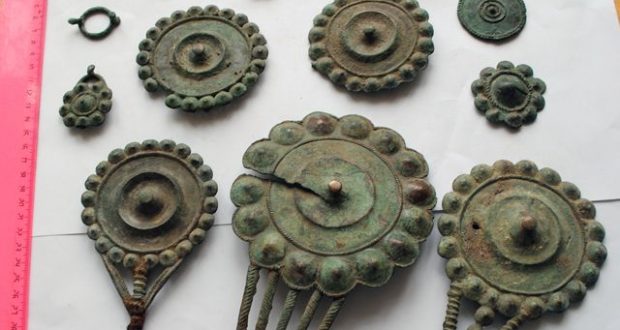In XVII-XVIII centuries eastern Tatarstan was in his prime, and Kazan Tatars experienced a decline. What discoveries have been made in the East recently, told historian Albert Burkhanov.
The eastern part of Tatarstan (Muslyumovsky, Sarmanovsky, Bavlinsky, Cheremshansky, Aznakaevsky and other districts), until recently, were little studied by historians. These districts were considered underdeveloped and sparsely populated. It was only in 2009, scientists began to systematically examine them and made a number of discoveries.
As shown by archaeological finds, people have settled in the east of Tatarstan since the Stone Age. For example, in 1986 in the cemetery of the village
Mitryava on the bank of the river Styarle discovered a stone sack of black flint of the Neolithic.
The evidences of block house culture and Bronze Age (2thousand. BC) were found. A valuable discovery of steel swords of the Scythian type. This light and lasting weapon used in close combat is 2,5 thousand years.
One thousand and five hundred years is to other artifacts – found in one of the areas, women’s combat belt sets. Exactly female because the local population took up arms, and the fair sex likewise: peaceful times were short. Worn under a protective “shell” made of copper and bronze, and only wealthy female – warriors could afford it.
The most significant monument east of Tatarstan was the “Cemetery of the Saints” – Old-Ursaevskoe cemetery located on a promontory right bank of Ika. It was discovered by chance during extinguishing peat bogs in a hot summer of 2010. Here 15 gravestones plates with the Turkic-Muslim epitaphs have well preserved.
These findings, as well as preserved three necropolis near Ursaevo led to the conclusion that there had existed urban settlements. In XVII-XVIII centuries east of Tatarstan experienced its peak, while in the Pre-Volga and Pre-Kama the economic depression came, having caused the conquest of the Khanate of Kazan by Ivan the Terrible.
To the borders Ural, fleeing from religious persecution and conquest, have come to live the most freedom-loving people in the west of the modern territory of the republic. Hence, the revolt of Batyrsha and support Pugachyov uprising 1773 – 1775’s, and other rebellions. People also migrated from south to north, repeating the ways of settlement of humanity, and in the wake of the trade routes.
Once the territory of modern Leninogorsk, Yutazov, Bavlov and Muslyumovo – passed the Volga-Caspian route from the Volga Bulgaria.
Mining and industries associated with them, such as iron works were developed. Big industrialists and patrons were Gubaidulins – ancestors of the
composer Sofia Gubaidulina, who lived in the village Bairyaka (RT Yutazinsky district).
By the way, on one of the gravestones stones found near the village Ursaevo archaeologists spotted image of the sun with the eyes and nose, and two snakes. Here also tamga have been found – signs of ancient Turkic alphabet, pictured close to the Arabic characters – evidences to the strength of pre-Islamic traditions. Old Turkic culture brought to territory by the nomadic peoples – Kipchaks, Nogai and Muslim – Tatars. Therefore, it is especially in the eastern Tatarstan clearly felt interaction of the two cultures – nomadic and settled agricultural ones.

